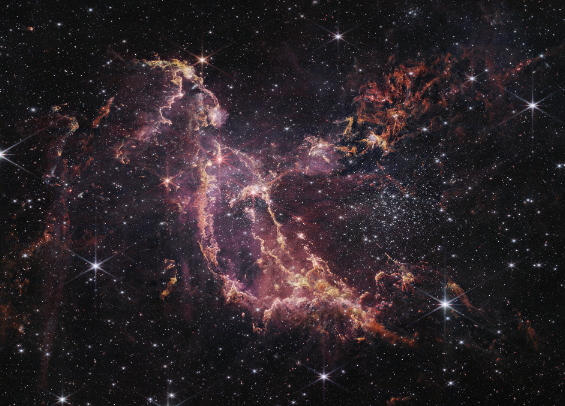The mystery surrounding NGC 346, one of the most active star-forming regions in nearby galaxies, has been lifted in part by the James Webb Space Telescope's unparalleled infrared vision.
This mysterious star-forming region is located in the Small Magellanic Cloud (SMC), a dwarf galaxy adjacent to the Milky Way.

Cosmic Noon
Scientists anticipated that it would be challenging to identify the region because the majority of dust grains in space are made of metals until Webb came around to change this.
Astronomers were keen on studying this region because the SMC's environment and the amount of metals it has is similar to early galaxies from billions of years ago. This era was known as the "cosmic noon" when star formation was most active.
About 2 to 3 billion years after the big bang, galaxies started producing stars at a high rate, according to NASA.
In contrast to the Small Magellanic Cloud, a galaxy at cosmic noon would contain hundreds of star-forming regions similar to NGC 346, according to Margaret Meixner, the team's primary investigator and an astronomer at the Universities Space Research Association.
Hence, NGC 346 offers astronomers a chance to study environments that are similar to the cosmic noon.
Read Also : NASA's James Webb Space Telescope Sees Shining Pearls, Diamonds in Previously Unseen Galaxies
Studying Protostars
By observing protostars that are still forming, scientists can assess whether the star formation process in the SMC is different from what we observe in our own Milky Way.
The primary focus of early infrared observations of NGC 346 was protostars with masses more than around 5 to 8 times that of the Sun.
According to Olivia Jones, a co-investigator on the project, Webb allowed them to probe down to lighter-weight protostars that are as small as one-tenth the size of the Sun to determine if their formation process is impacted by the lower metal content.
According to NASA, these ribbon-like streaks in Webb's photos are caused by stars' absorption of gas and dust from the surrounding molecular cloud as they grow. The material is taken in by an accretion disk, which feeds the core protostar.
Although protostars in NGC 346 have been shown to have gas surrounding them, dust in these protostar disks has just recently been discovered thanks to Webb's near-infrared investigations.
"We're seeing the building blocks, not only of stars, but also potentially of planets," Guido De Marchi of the European Space Agency (ESA), a co-investigator on the research team, said in a statement.
"And since the Small Magellanic Cloud has a similar environment to galaxies during cosmic noon, it's possible that rocky planets could have formed earlier in the universe than we might have thought."
Webb's NIRSpec sensor's spectroscopic data are currently being processed by the team. These discoveries should provide new insights into the matter accreting onto specific protostars as well as their surroundings.
Related Article : NASA's James Webb Space Telescope Snaps a Chaotic, Disturbing Connection Between Two Galaxies

ⓒ 2025 TECHTIMES.com All rights reserved. Do not reproduce without permission.




